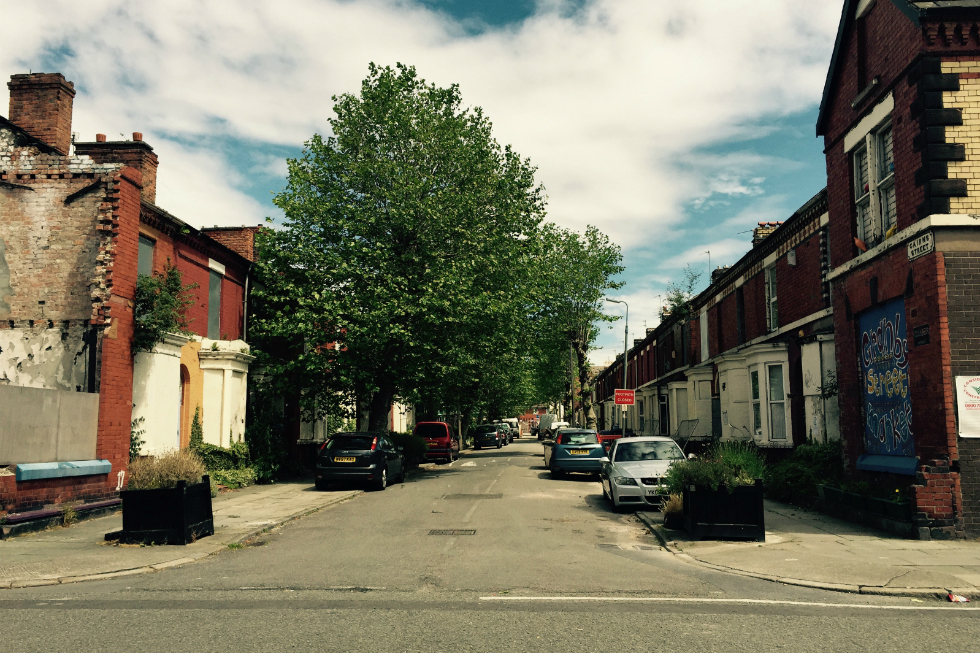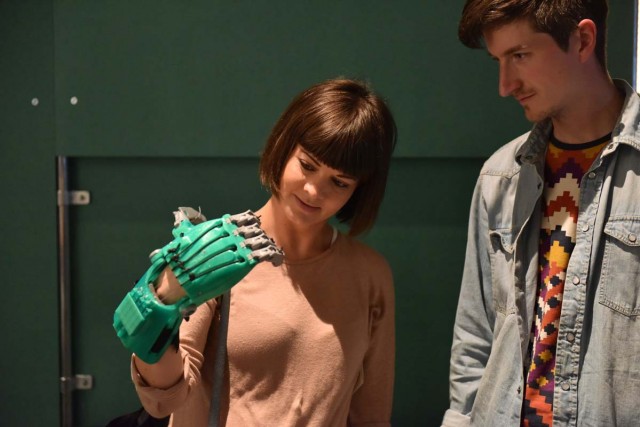“It’s art for the people, by the people”: Build Your Own: Tools for Sharing — Reviewed

Jade French considers the joys and difficulties of showcasing contemporary, innovative and collaborative community arts in the gallery space…
3D printed prosthetic hands, an Internet of Things machine and a backyard casting factory: a seemingly bizarre mix of objects have taken up residence in Liverpool’s FACT this summer. Build Your Own: Tools for Sharing aims to explore the connections between craft, technology and community, examining how how we work, share and collaborate together.
Speaking from personal experience, exhibiting community arts practices is a fascinating yet entangled and complex venture. How do artists translate collaborative practices undertaken with individuals or communities into a static exhibition? Which then begs the question: where is the art really located? Is it in the art gallery, or is it out in our communities?
The gallery, or should I say workshop, features four different pieces — Homework, Acts of Care, Neurotic Machines and Desktop Prosthetics — and a considerable public programme of talks and workshops, plus the newly formed FACTLab to boot. Standing in the gallery, I am hypnotized by the rapid and autonomous movements of a 3D printer, and in my peripheral vision I can see a set of neon prosthetic hands. These belong to DoESLiverpool’s Desktop Prosthetics, and wouldn’t seem out of place in a sci-fi thriller. Using computer controlled robots, DoESLiverpool join global movement e-Nable to construct and supply the components for building artificial ‘raptor’ hands for those living with amputations. You can help build one too by attending one of their free summer workshops.

The piece that has caused a considerable buzz is Homework by Will Shannon and Assemble, a new commission exploring domestic spaces as experimental places for production and learning. This project links in with Granby Four Streets Community Land Trust (CLT), an extraordinary achievement by local residents in transforming the abandoned — and previously earmarked for demolition — houses of Toxteth with the help of Assemble, a design and architecture collective who are nominated for this year’s Turner Prize. Earlier in 2015, Shannon and Assemble transformed the backyard of 48 Cairns Street in Liverpool into a casting factory, where reclaimed materials such as bricks and tiles were used to create unique crafted mantel pieces.
In the exhibition, audiences can view a finished mantel piece alongside a recreated backyard complete with tools, cement mixer and overalls. No doubt this presents a striking installation, but is this a worthy representation of the depth of the creative practice? Or should we be urging audiences to view the work in situ? It leaves me speculating — where is the art?
Intrigued by this dichotomy, I decided to visit the Granby Four Streets site and the backyard so carefully re-constructed in FACT. During my tour — led by Community Development worker Michael Simon — I got talking to Hazel Tilly, a resident and board member of Granby Four Streets CLT, who believes that “what you see at FACT is the end result of people loving their area… It’s about art at a street level; it’s art for the people, by the people”.

I wondered how well that this type of art would transfigure into the institutional framework of a gallery. Like me, Tilly feels that the process of creating these mantel pieces, and the wider context of this special housing project, is in fact the ‘art’. Creativity is at the heart of the Granby streets; it exudes it. And after visiting, I am not sure how well this translates into a static installation. Something, the ephemeral nature of community practice perhaps, is lost.
Interestingly, another of the artists featured in the exhibition, Linda Brothwell, has also collaborated with residents of Liverpool in order to inform her artwork. In the research stages for the piece Acts of Care – The Lost Letters of Liverpool, Linda describes the process: “I met, interviewed and documented individual’s craft practices as well as an overall series of informal meetings to tease out ideas” which were then “taken to my studio to form my backbone on the work”. In her piece, Brothwell employs traditional Polish craft techniques in order to refurbish signage around the city. In the exhibition, audiences can view Brothwell’s tools, photographs of signage, a video and newspaper, all of which contribute to build a fuller picture of the artistic practice.
In conversation with Brothwell, she shed light onto the choice of which items to exhibit: “It is important to note that the exhibitions you see are a collaboration – yes, I am the artist, but the curators behind the show, Clare Cumberlidge and Lauren Parker, have carefully orchestrated the whole thing”. The curators input becomes particularly evident in their choice to support all of the artists to display films, a wise decision I believe as they offer a window into the communities the pieces were created within.
Build Your Own, intentionally or otherwise, wrestles with the difficulties in exhibiting community art. It does, however, highlight the importance in how we convey the quality of the artistic process to wider audiences, which raises bigger questions for me in how we understand where the ‘art’ is primarily located in this type of work. Why no tours organised around Granby Four Streets? Why no maps to find the signage around the city? A missed opportunity perhaps to enact bolder curatorial strategies to engage audiences with the art process that exists beyond the gallery.
That said, we need more exhibitions, artists and curators like this, who are willing to engage with a thorny but thought-provoking field. We need more exhibitions in which artists whose practice is entangled in people and places can explore the ways they can bring work meaningfully into the gallery domain. I only wish that more had been done to link the pieces with their respective communities, as for me, FACT is merely the first co-ordinate in the exploration of these complex art works.
Jade French
This article has been specially commissioned for The Double Negative by Liverpool John Moores University and Arts Council England. Part of the collaborative #BeACritic campaign — see more here
See Build Your Own: Tools for Sharing at FACT, Liverpool until 31 August 2015 — Tuesday-Sunday, 11am-6pm, free entry
See more info on FACT’s summer workshops here





